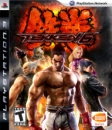PENNY BLOOD
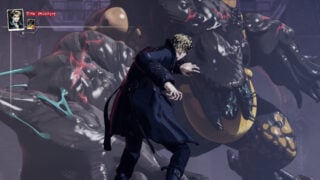
What makes Penny Blood a spiritual successor to Shadow Hearts? What major elements does it carry over?
Matsuzo Machida, Lead Game Designer: “The fact that it’s a game set in modern times that deeply explores the shadows of history, and its horror aspects such as black magic and creepy creatures are two major elements that PB has inherited from its predecessors. The detective aspect of investigating and solving bizarre murder incidents, on the other hand, would be one new major element.
“The game will also have a very sad, tragic story that overarches everything, but this is an element that represents my own thoughts on life and the world rather than something I’ve carried over from a previous work.”
The protagonist Matthew is an investigator cursed with transformation abilities inherited from his father, which he must use to vanquish creatures and uncover the truth behind a bizarre incident. What elements of cosmic horror can we expect to encounter in this story?
Machida: “Matthew is an Inheritor—one who has inherited “Old Blood.” In his case, the power of his blood allows him to transform into fusion monsters.
“As he goes on to solve various bizarre incidents, Matthew will close in on a criminal hiding in the shadows who is slowly becoming a threat to all of the human race. He’ll also run into a slew of other monsters… And maybe even some from the Cthulhu Mythos which you might be familiar with.”
Matthew has a complicated relationship with his abilities, hating them, but using the gift he despises to defeat evil. Will that relationship be reflected in the gameplay at all?
Machida: “I designed the game systems of my previous games in a way that they would reflect the main character’s psyche, and it’s become a large characteristic of the way I approach game design.
“The same is true in Penny Blood. Matthew, the main character, will wander through the ‘Graveyard’—the abyss of his own heart. To Matthew, it looks like the creepy traveling carnival that his father took him to when he was a child. As Matthew experiences the different attractions, he’ll face his trauma and all the anguish that comes with it. This is a path he cannot avoid if he wishes to unlock new fusion monsters.”
The Graveyard will also hide great mysteries and affect which ending each player unlocks.
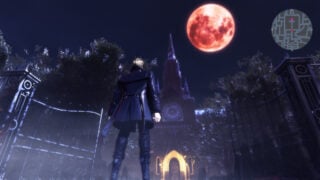
Can you tell us more about Matthew and companions Emilia and Suseri? Who are they and how will their paths cross?
Machida: “At first, Matthew prepares to dispassionately complete his new job just like every other one that’s been assigned to him… But as he proceeds with the investigation, he starts searching for Emilia, a woman who went missing while in Japan. Matthew’s meeting with Emilia will greatly change the course of his life. Suseri is someone who helps Matthew out while he’s in Japan. No… perhaps ‘surveillance agent’ is more accurate.”
Like the Shadow Hearts series, Penny Blood will have players exploring multiple locations across the world, including New York, Japan, China, and Europe. Given the variety of locations, what can we expect in terms of the scale of each new place we visit?
Machida: “I’m very interested in the world of 100 years ago, and overjoyed that I can set Penny Blood in that time period. The same countries still exist in our time period, but their cultures and relationships have changed a great deal. I hope to depict these elements in a fresh manner through a visual story.
“The size of each town will depend on its location, but my aim is to make them each ‘just the right size,’ and of course fill them with unsettling and striking landscapes.”
The overworld map is described as a bird’s-eye view-style display. Does that mean we can expect a more traditional-style method of traversal (e.g. Wild Arms 1, Final Fantasy VII), or is it selection-based?
Machida: “Penny Blood will be a game where you dive deep and explore a cramped, yet profound world, rather than one where you adventure across a vast world map.
“Our current plan for the world map is that it will be selection-based and displayed from a bird’s eye view, but we plan to create it in 3D so that players can change the perspective to find hidden landmarks or new routes that can lead them to important evidence. We really want players to become immersed in the detective / special agent role, even when they’re on the world map!”
Besides the story, what other activities can players look forward to doing in Penny Blood?
Machida: “Aside from the overarching story of Penny Blood, which will be its main focus, there will also be several sub-quests (side stories) that the player can engage in.
“The sub-quests will solving cases by using technology that had just been introduced at the start of the 20th century. This includes fingerprinting, voiceprint profiling, mental profiling such as Rorschach tests, and other pioneering methods of criminal profiling that rely on science to nail criminals. Through Matthew, players will be able to experience what it’s like to explore the world of Penny Blood as a professional investigator.”
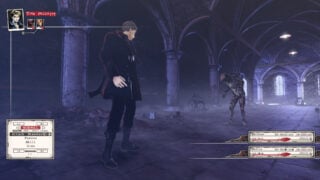
Can you talk about the turn-based Psycho Sigil battle system? How does the twitch-trigger reaction strengthen attacks and keep the player more involved compared to traditional turn-based battle systems?
Machida: “The original idea for the Psycho Sigil came to me when I was trying to imagine a way to depict a character’s soul—an otherwise invisible thing. I needed a way to graphically display a character’s lineage, personality, and trauma, and also in a way that would allow it to transform as the story progresses. I thought it’d be a great way to depict the unique aspects of each character.
As for how it works, each sigil contains shining dots that represent spots the player is supposed to hit. The player’s goal is to hit the button when the “moving light passes over each spot at the proper timing. The Psycho Sigil will serve as an important tool for succeeding in both battles and events.
“Attaining a perfect with a Psycho Sigil input during an attack will allow you to do things like kill a normal enemy in one hit or perform a combo attack. For the latter, there will be a randomness to it. Combo attacks won’t simply link up separate attacks from different characters – they will each have their own animation, where characters gang up on the enemy together. Discovering the hidden combo attacks for each of the unique characters will be part of the fun of Penny Blood‘s battle system.”
The Fusion system from Shadow Hearts returns in Penny Blood, allowing Matthew to utilize monsters in battle. How has that been enhanced or changed this time around?
Machida: “The concept I used in my previous series was “devils,” which was influenced by Devilman, a personal favorite of mine, but this time I’m focusing more on myths and legends. With Matthew, I wanted to focus on the ‘holy’ nature of heroes that appear in fairy tales, so I decided to go with knights. But they aren’t just normal knights—they’re spectral knights. I really put a lot of care into each of their designs. I wanted to make each knight unique, with equal helps of style and creepiness, in order to turn them into special creatures you can only see in Penny Blood.”
Sanity Points also return, which keep your party members in check from succumbing to darkness. Can you tell us more about that? Does this have any consequences outside of battle?
Machida: “The aspect of the battle system that evolved the most for Penny Blood is actually how the Sanity Points (SAN) affect things.
“In my previous series, when a character’s sanity points reached zero, they would go berserk and the player would no longer be able to control them. In Penny Blood, the player will be able to go on controlling characters with zero sanity. Characters who go mad will receive attack boosts and become stronger, but if they take any damage, they’ll gain sanity points and become sane again—just like when you slap someone who’s gone berserk in order to help them get a hold of themselves. In order to defeat powerful foes, players will need to strategize and constantly dance back and forth between the realms of sanity and madness.
“We’re currently investigating how to use sanity points outside of battle. They may be involved in certain events, such as performing black magic rituals…”
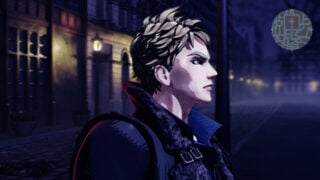
We’ve talked about the similarities between Penny Blood and its predecessor, but what are you doing this time around that is all-new or that you were not able to do before in Shadow Hearts?
Machida: “By setting this game as a product aimed for adults (18+) from the start, I aim to restore the creepiness and grotesque atmosphere that gradually faded out from my previous series and see how far I can really take things. Of course, I don’t intend to just make this some messy splatterfest. No matter how grotesque a scene gets, I still want it to excite players and give them an exhilarating feeling.”
While you (Shadow Hearts creator Matsuzo Machida) are of course helming Penny Blood, what other key staff from the series is returning for the spiritual successor?
Machida: “Currently, Kato-san, the character designer and art director, and Hirota-san, the main composer, have been fully involved in the game’s production. There is a high possibility that several other people who worked on my previous series will take part in this project as well. However, you can trust that every staff member of my current team is amazing in their own way, and that Penny Blood will be a completely new creation that can stand on its own.”
For our final inquiry, please use this opportunity to share a message with the fans.
Machida: “It’s nice to meet you, everyone. I am Machida, the general director and scriptwriter for Penny Blood. We’re deeply grateful for all the passionate support fans all around the world are giving us as we embark on this new challenge of ours.
“A new type of RPG filled with love, tears, and laughs is about to resurrect right here and now, wearing a newly-polished dark horror dress! Please give us your support!!”
















